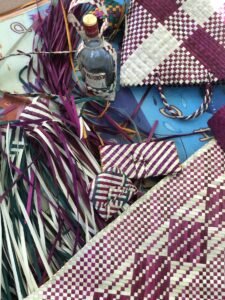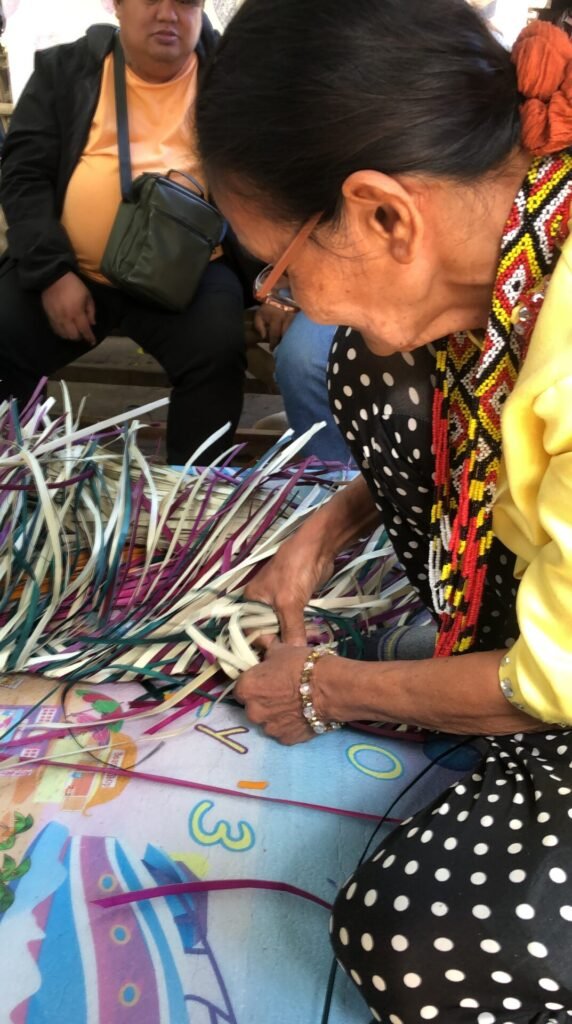
At 74 years of age, Trinidad “Trining” Bugoy of Barangay Paligue is the sole living soul — yet still fully capable — to produce intricate mats from spiny Romblon or Pandan leaves.
The mat weaving industry was much alive decades ago, with more matriarches altogether producing different styles until such time that a change in interests and life priorities kickstarted the slow demise of the industry. The younger generation opted to steer their future to the modern and urban lifestyle, with slim chances of interest to learn the art of their own town’s weaving industry.
Currently, Aling Trining is left as the sole living full-time weaver and producer. Evident by her thick, calloused and stained fingers, her love of labor ensued through the decades, however, with meager support and low interest from her own clan.
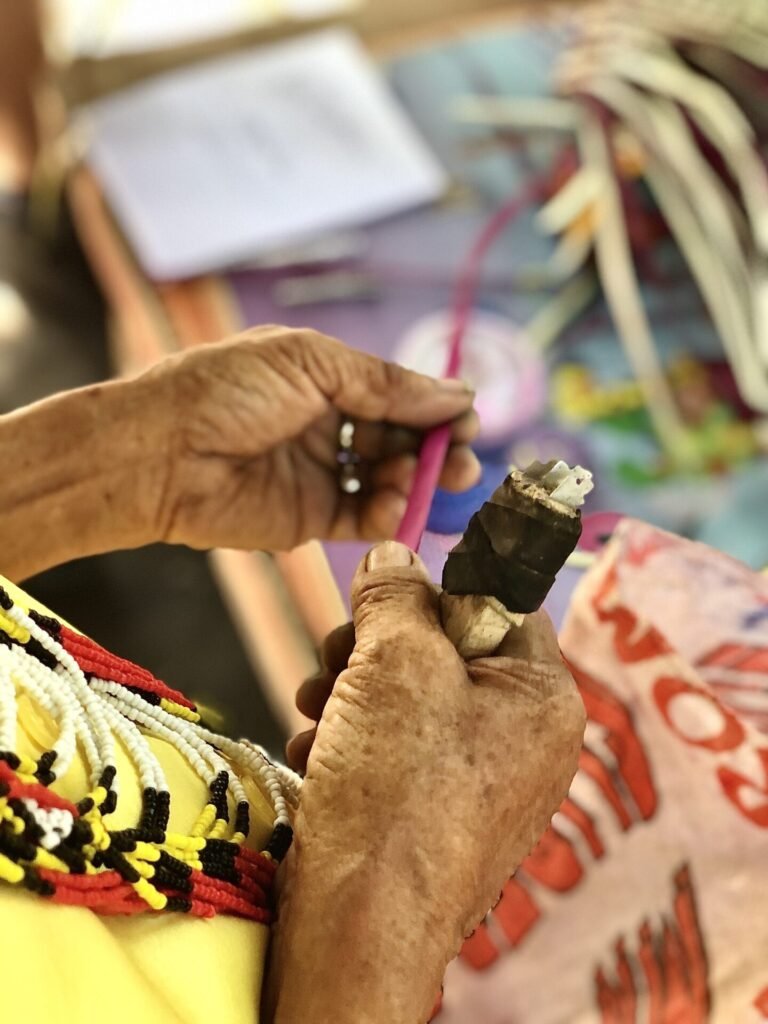
As such, her children and grandchildren help in harvesting Romblon leaves while the matriarch focuses on the weaving per se process. Some of her daughters are capable of weaving but can only produce simple and basic designs. Certainly, interest and heart is needed within the community to begin the official process of turning over the skill or the entire mat weaving industry of Hagonoy itself.
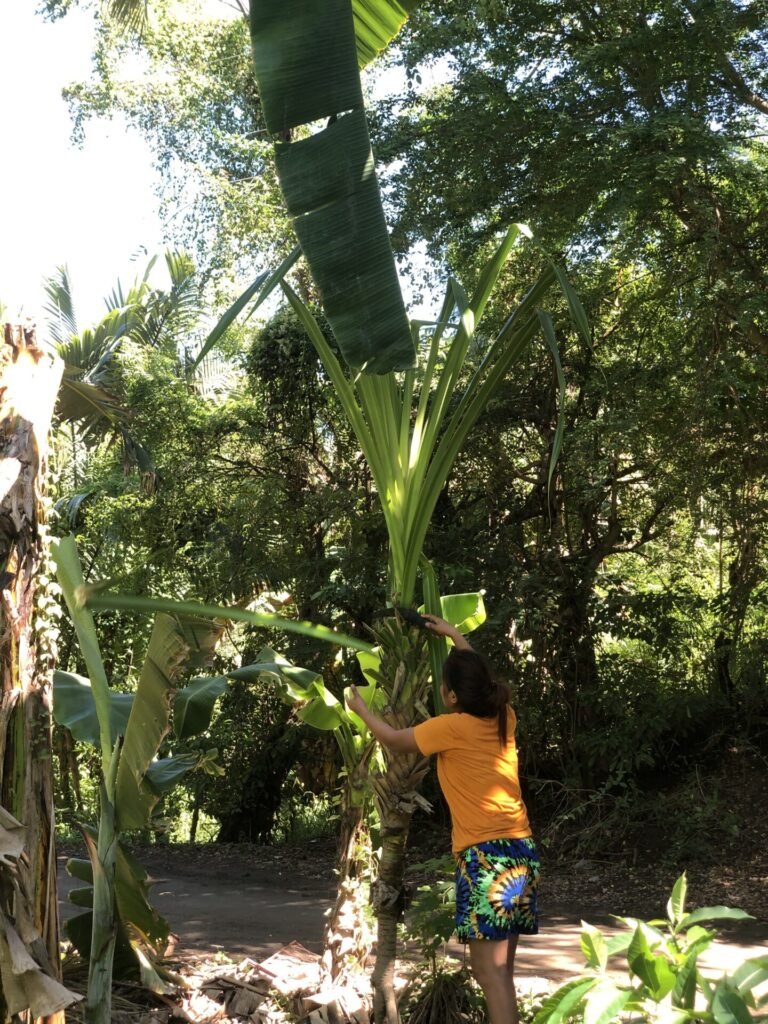
THE LABORIOUS WEAVING PROCESS
The Hagonoy Mat Weaving Process begins by harvesting the right aged spiny Romblon leaves from larger than life trees at any time of the year. The Romblon, synonymously called Pandan leaves, feature elongated lanceolate with spiny or thorny margins, which actually adds to the difficulty of the process. They would strip the leaves using their crude handheld blade holders to produce the uniform sized weaving strips.
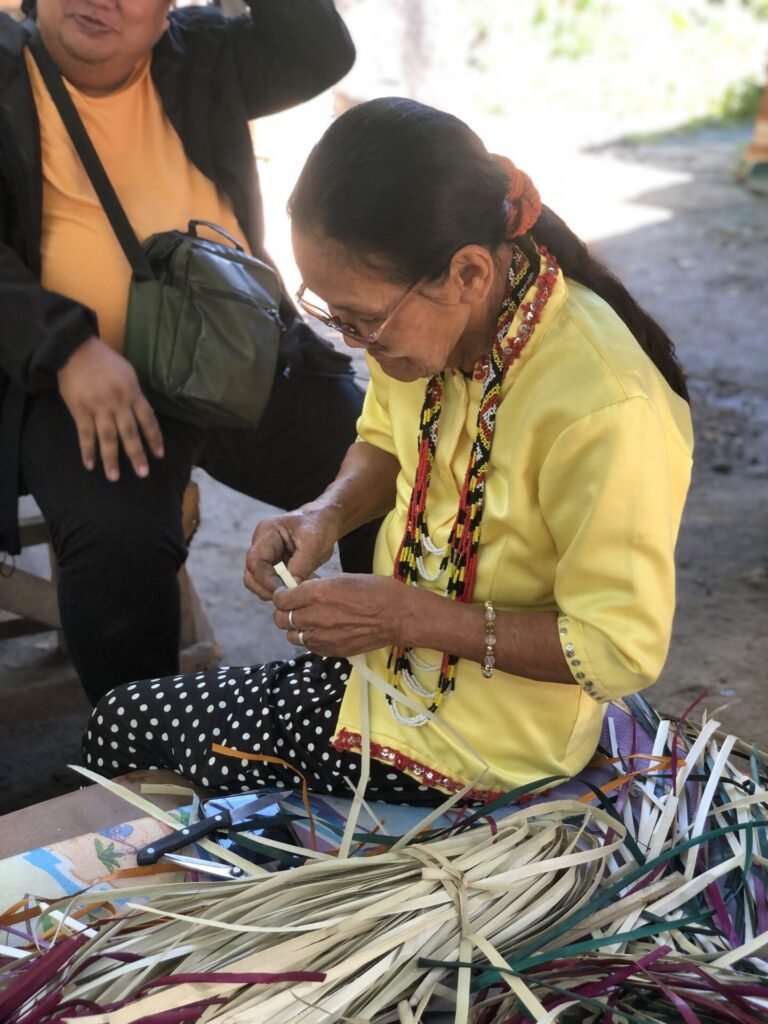
In order to create the patterns, Aling Trining produces differently colored or dyed strips. The white or light beige ones are boiled to strip off the natural colors and sundried after. The dyed ones are treated with commercial dyes provided by the Department of Trade and Industry and sundried thereafter. With enough leaves stripped on inventory, Aling Trining begins the longer process of weaving.
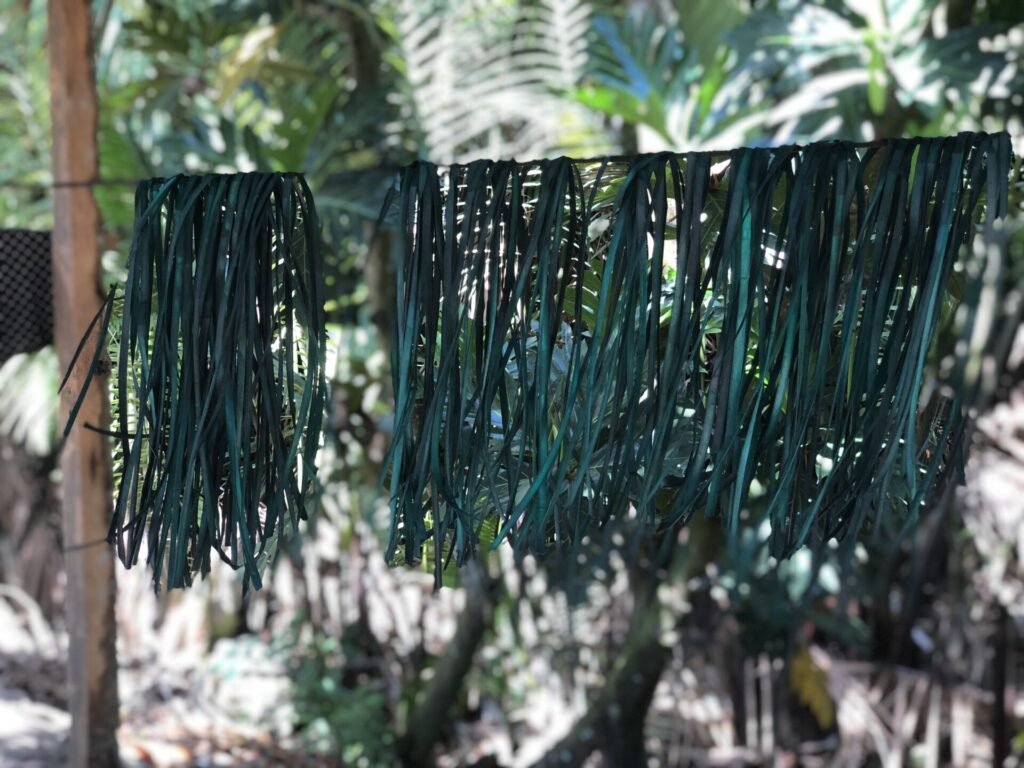
Production is limited to her daily capacity to weave. We noticed that she had an inflamed lesion on her right index finger that limits her daily capacity. Hence, there is not enough inventory of products to supply the demands of locals.
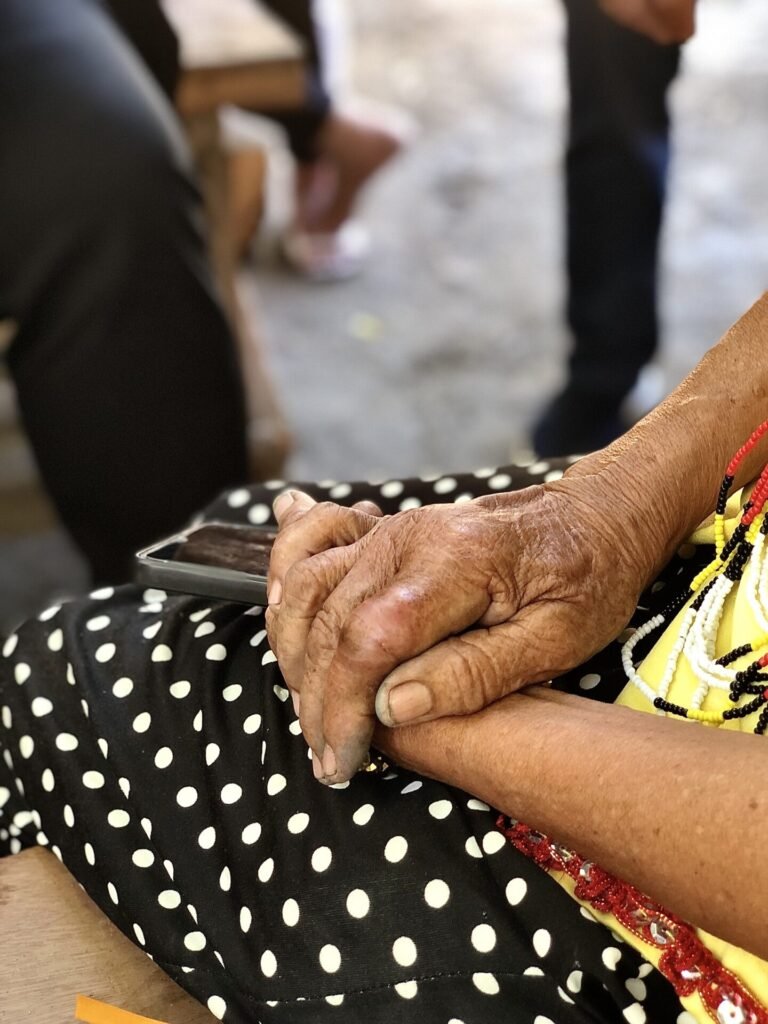
ALMOST SEVEN DECADES OF WEAVING
Learning the art of the tedious process at the age of 10 directly from her grandmother, Aling Trining was able to muster and master her skills in creating her labor of love into various forms such as wallets, handbags, wine holders, table runners and hats. Having the eye and passion in weaving unique and intricate patterns, she was able also to produce even fashion gowns from her work of art.
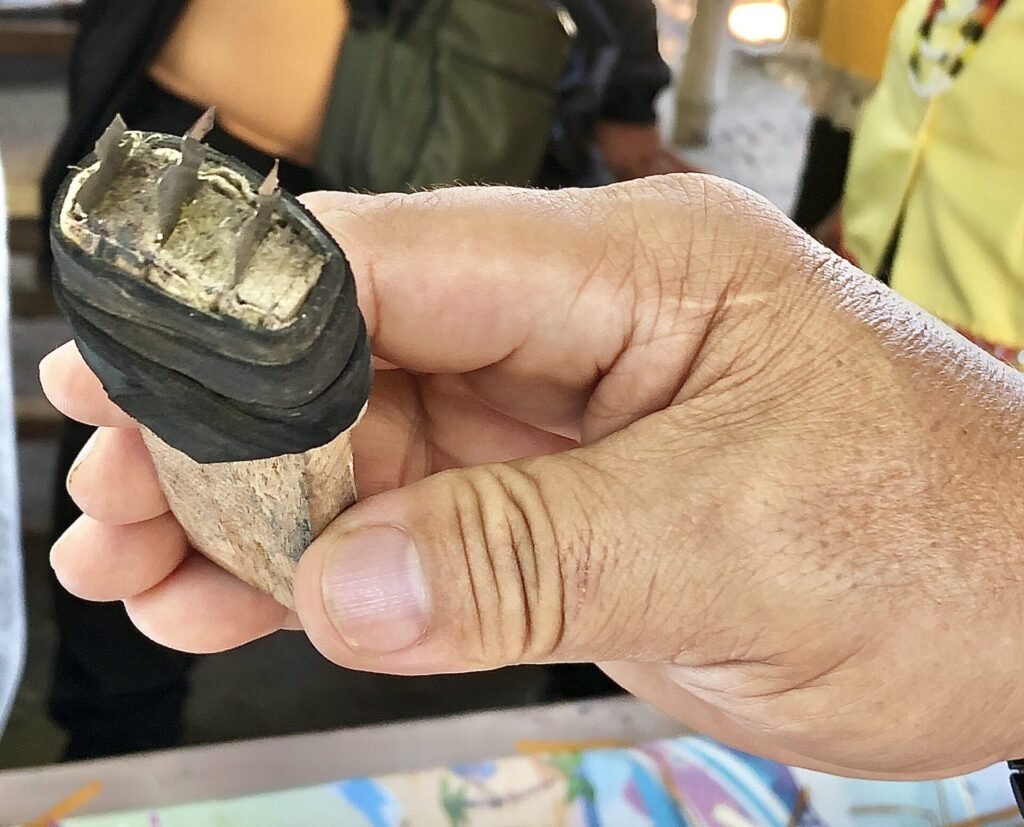
Take note, she is able to do this without any use of electric equipment or machineries. She has her own weaving table as her workspace and only use crude cutters and handcrafter blade holders for leaf stripping located at a covered bare space, with a crude awning and a simple hut as their space for logistics.
Would you believe that at her age, she has been invited as a Trainer of the Department of Trade and Industry – Davao Region? But who to train? There are interested trainees but the question is, do they see the value of the craft?
Hence, a grim future for the industry.
THE SILENT EFFECTS OF CLIMATE CHANGE
Production requires a perfect recipe and conditions in order to achieve the weavable strips. This involves the right choice of leaves with right age, sufficient time to dry, hopefully in constant temperatures and humidity.
Little do we know, climate change has a significant impact on their production. The monsoon season meant longer drying periods while the summer heat enhances the brittleness of the raw materials which leads to breakage and more wastage. Imagine a prolonged drought season and how this affects Aling Trining’s craft. In order to support the industry, a thorough study necessitates to begin the preservation of the mat weaving industry.
AT THE END LINE?
With progressive effects of ageing, her productive years and capability would definitely slow her down. It is clearly evident. Without a clear protege, there isn’t a future to behold.
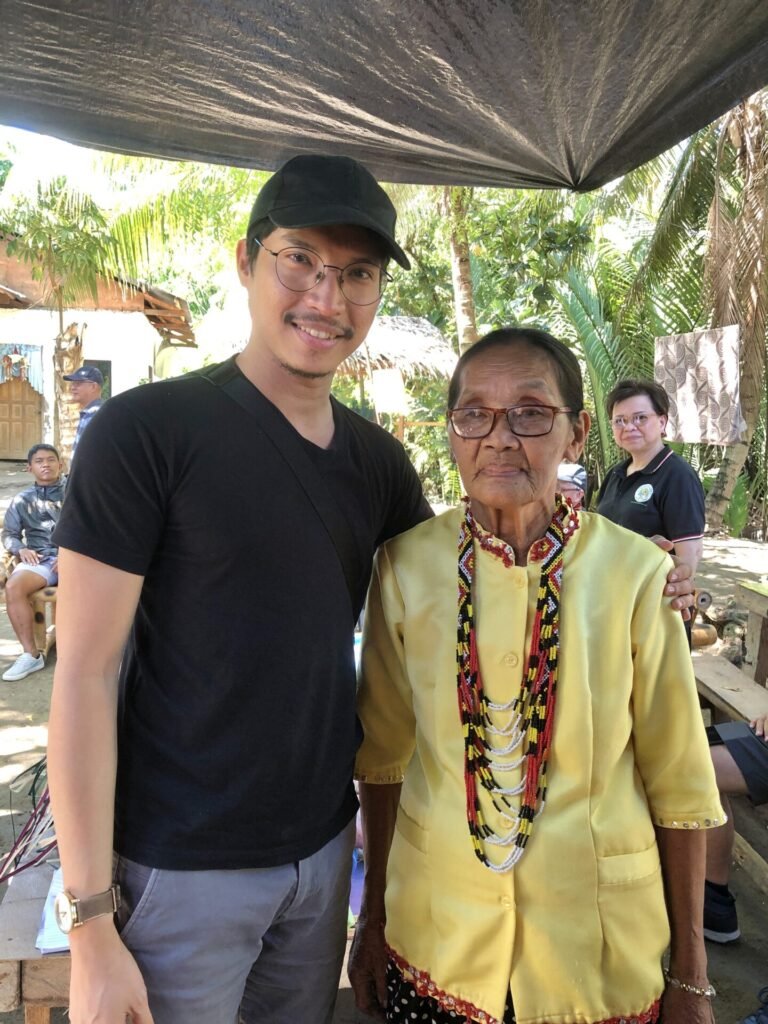
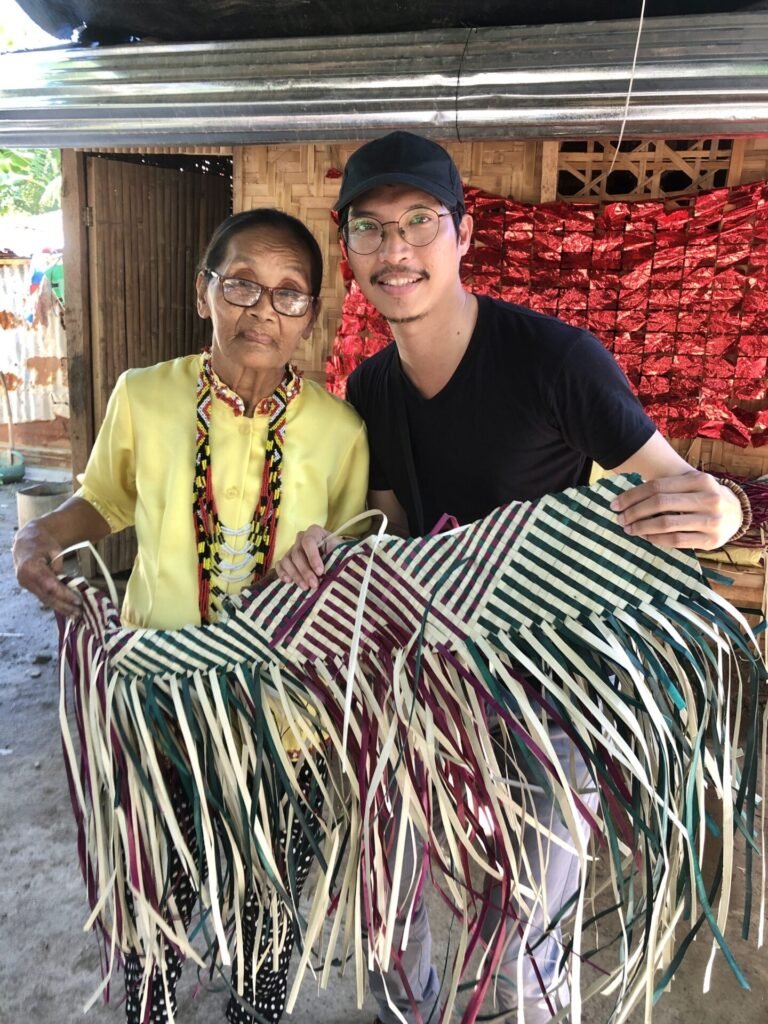
Despite of these, Aling Trining can still maintain her proper posture. I observed her still able to hold her back straight but with mildly slouched shoulders. She converses purely in their Bisaya language, thus, you may require a translator if you are to negotiate with her. In addition, the matriarch is from the Kalagan tribe, one of the identified Indigenous People in Davao region.
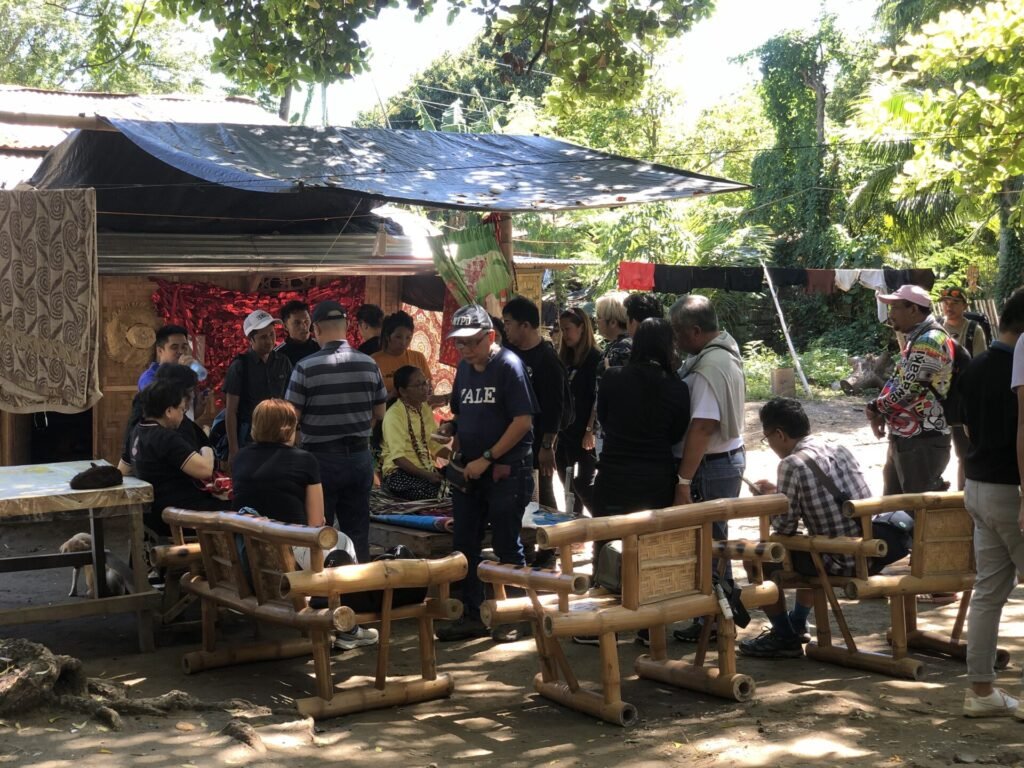
The local government of Hagonoy also helps the industry by ordering customized mats during town festivals and special events that they conceptualize, which Aling Trining would design and eventually produce, herself.
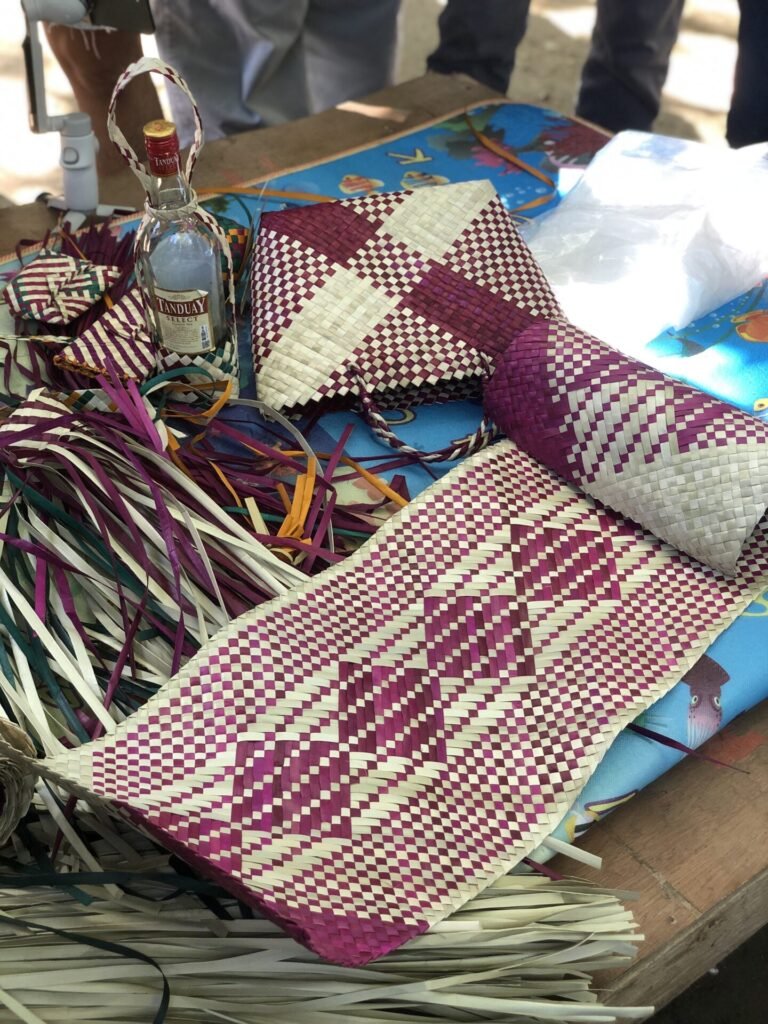

We hope that someone would truly take the helm in learning the art and skill to revive the soul of the mat weaving craft. For now, the industry is shallowly breathing, spelling a quite grim future. Even the government exerts efforts to support it in any way.
But the vital solution is a living soul with a fire and sheer passion to embrace the love of the labor. Who could it be?
DID YOU KNOW?
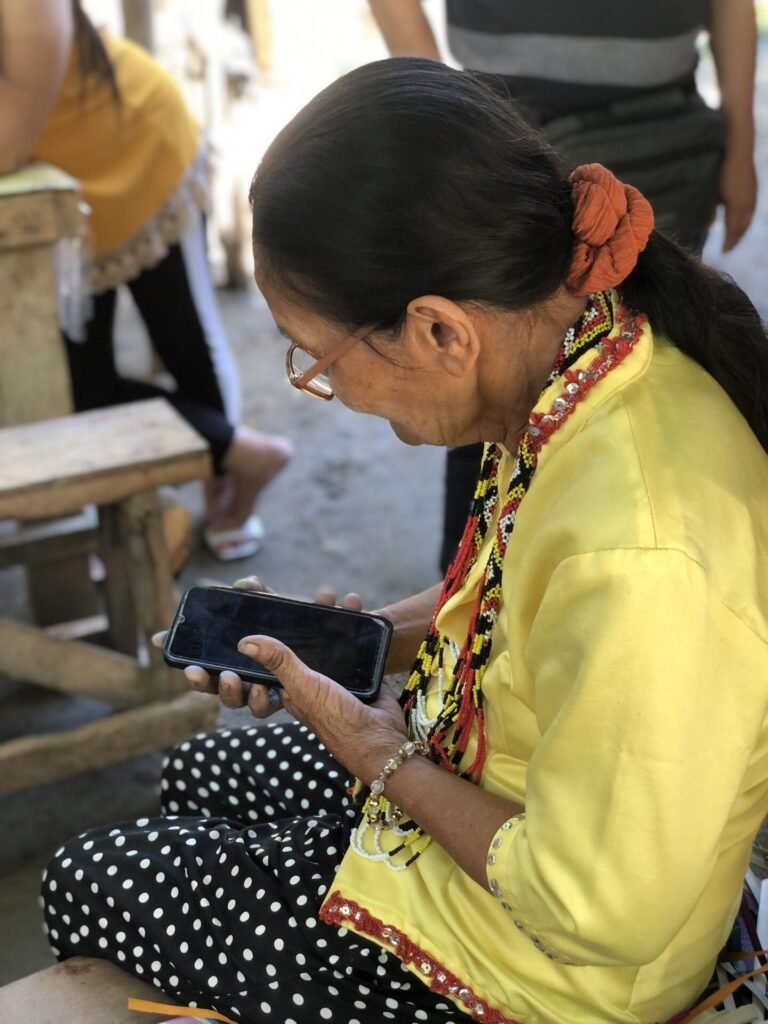
Her age and limitations did not hamper her likelihood to embrace technology. At her age, she is able to use a smartphone, and believe it or not, has own active social media account!
SUPPORT THE INDUSTRY
Contact Aling Trining directly for your orders. With the assistance of the LGU, they help ship the orders to customers far and wide.
MS. TRINIDAD BUGOY
Purok Pinya, Barangay Paligue, Hagonoy, Davao del Sur
Contact Number: +63-970-545-4853


